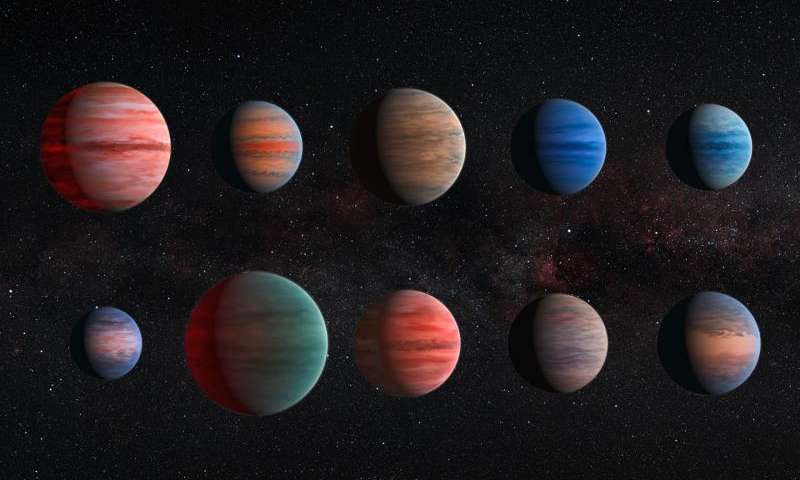This seemingly small detail can tell us a lot about planets similar to ours. The study of exoplanets has received a lot of funding and effort lately as a way to search for extraterrestrials and learn about other solar systems. They have found around 2,000 exoplanets in particular and out of those, some astronomers are focusing their research on Jupiter-like ones.
Astronomers have used the NASA/ESA Hubble Space Telescope and the NASA Spitzer Space Telescope to study the atmospheres of ten hot, Jupiter-sized exoplanets in detail, the largest number of such planets ever studied. The team was able to discover why some of these worlds seem to have less water than expected—a long-standing mystery. The results are published in Nature.
They orbit very close to their stars, making their surface hot, and the planets tricky to study in detail without being overwhelmed by bright starlight.
The team’s models revealed that, while apparently cloud-free exoplanets showed strong signs of water, the atmospheres of those hot Jupiters with faint water signals also contained clouds and haze—both of which are known to hide water from view. Mystery solved!
Ah so apparently it was an illusion and they don’t actually have missing water. This is good to know. Aside from intellectual curiosity it could likely indicate that these exoplanets may indeed be more similar to ours.
thanks to phys.org for the great info
thanks to NASA for the pic
